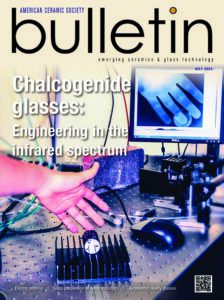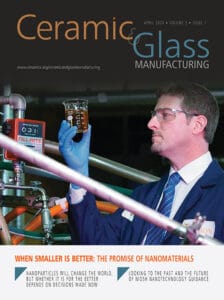
Abstract Title: Evolution of Molecular Dynamics Simulations of Glass Surfaces and Interfaces
Although Rahman’s molecular dynamics simulations of a simple Lennard-Jones liquid in 1964 altered the understanding of diffusion in a liquid, more general acceptance of simulations required development of more realistic interatomic potentials to describe functional materials. In 1976, Woodcock, Angell, and Cheeseman published a potential for amorphous silica that included an exponential repulsion and a screened coulomb term that started an increase in simulations of silica and silicates. More complex potentials were added in future simulations to address more complex systems, especially where chemical reactions were involved. Simulations began to provide insight into molecular mechanisms that could only be inferred from experimental data or provided predictions that were subsequently verified via experiment. Often the simulations instigated further experimental studies or the development and application of better microscopies and spectroscopies. Conversely, simulation methods evolved to provide ever more realistic results via design and incorporation of better interatomic potentials or enhanced ab-initio methods. Today’s presentation will discuss our evolving studies of glass surfaces, glass/crystal and glass/water interfaces, nanoconfined phases and the effect each phase has on the other.
Bio:
Professor Stephen H. Garofalini is Distinguished Professor of Materials Science and Engineering at Rutgers University, Piscataway, NJ. He obtained a BS and a BA from Rutgers in Ceramic Science and Engineering and Liberal Arts, respectively, an MS in MSE from the University of Washington, and his Ph.D. in MSE from Stanford University. After his MS degree, he worked at Lockheed on the development of the Space Shuttle Insulation Tiles and coatings for the tiles as a Scientist (1973-1977) and later, while at Stanford full time, part-time as Research Engineer (1977-1980). He held summer visiting faculty ASEE awards at Stanford and NASA Ames Research Center in 1981, 1982. Starting at Rutgers in 1980, he has performed both experimental surface spectroscopies on glasses and computational molecular dynamics simulations, with emphasis on the latter. His group has developed innovative and reactive force fields for studies of atomistic behavior involving glass surfaces, water/glass interactions, proton transport, nanoconfined phases, intergranular thin films, and conversion cathodes in Li-ion batteries using a dynamically variable charge potential. He is currently evaluating auto-dissociation of water molecules that are consistent with ab-initio calculations employing nuclear quantum effects. He has over 130 publications and over 120 invited talks at national and international conferences. He is ranked in the top 2% of the world’s most-cited scientists in his field as determined by the Stanford Top 2% listing. He received both NASA and Lockheed awards and is a Fellow of the American Ceramic Society.
Subscribe to Ceramic Tech Today

Don’t miss the latest ceramic and glass materials news. Receive the CTT newsletter to your email three times a week by subscribing at this link.
Subscribe to Ceramic & Glass Manufacturing Weekly

Don’t miss the latest ceramic and glass business news. Receive the C&GM Weekly newsletter to your email every Monday by subscribing at this link.


